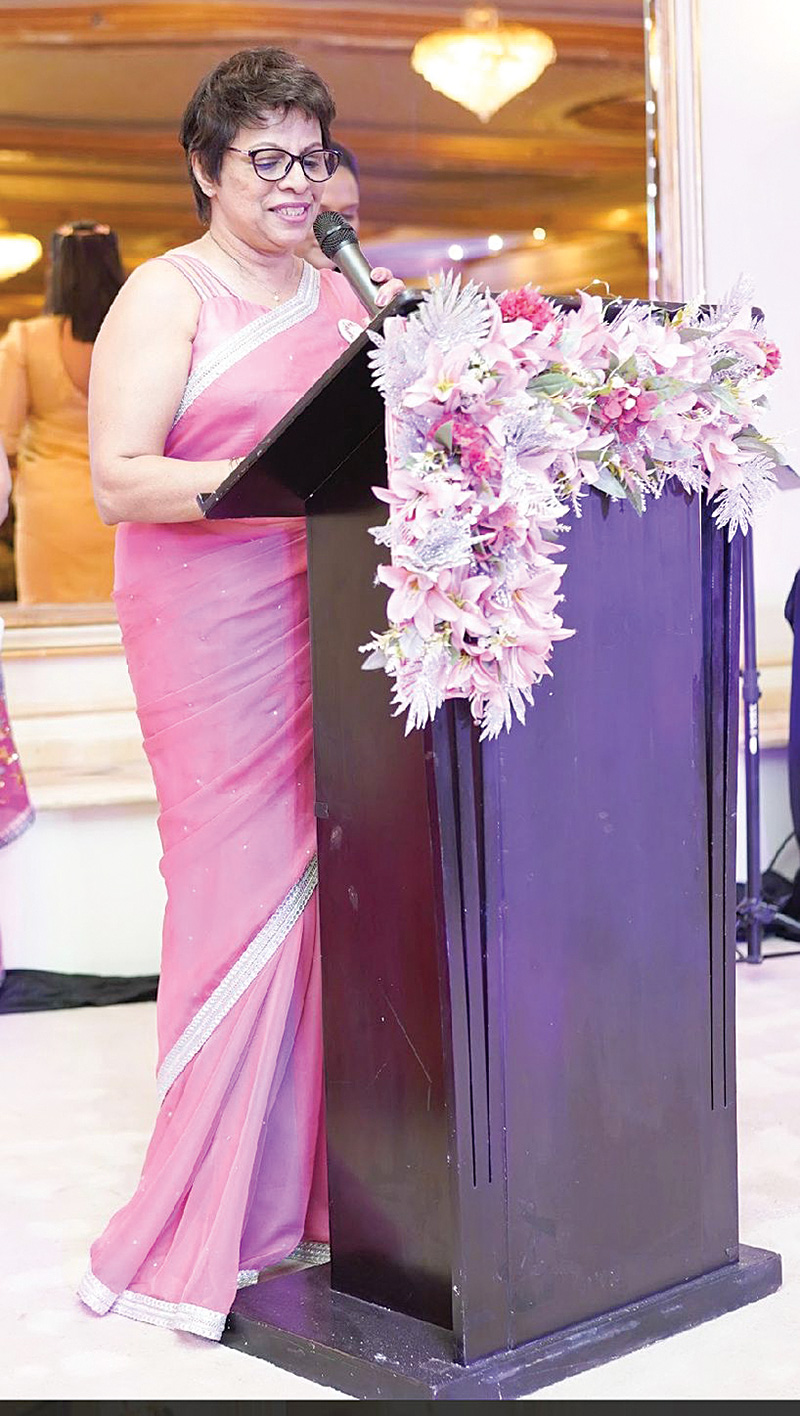Life style
How elephant poop becomes fancy paper in Sri Lanka

BY ZINARA RATNAYAKE
An elephant can defecate 16 times in one day—and its 200 pounds of dung can double as paper pulp.Grown-up elephants can eat more than 300 pounds of food—mostly grass, twigs, foliage, and tree bark—in a single day. In the same period, they may defecate 16 to 18 times, producing over 200 pounds of dung.
In Randeniya, a small village in the lower wetlands of Sri Lanka, elephant poop is a renewable resource. The sun-dried, deep-brown dung piles up like haystacks in a painting by Claude Monet.
Visitors could be forgiven for thinking that the poop is useless. But at Eco Maximus, a manufacturer in Randeniya, it takes on a second life.
More than 20 years ago, a man named Thusita Ranasinghe saw some dung and had an idea. “He thought he could make paper from it,” says the company’s brand designer, Susantha Karunarathne, with a smile. At his office inside the company factory, Karunarathne wears a green t-shirt which says elephantdung paper and shows off some of his recent journal designs. On a table nearby, a several women carefully design covers for multi-sized notebooks. On another, the finished product is packed and ready to be shipped. Today, Maximus creates a range of stationery and souvenirs, which are sold in the local market and in 30 other countries around the globe.
Eco Maximus was an early producer of elephant dung paper, and the first in Sri Lanka, and refining the manufacturing process involved a lot of trial and error. Elephant dung is brought in by nearby rescue centers, Karunarathne says during a tour of the factory.
Fresh elephant dung, semi-solid and green in color, smells. But after it dries under the hot tropical sun, the smell disappears. Collectors gather the deep-brown, fiber-rich piles in a piping-hot steam boiler. “We boil for one hour, to ensure that the dung is germ-free,” says Vibhatha Wijeratne, the factory manager, wearing a pair of yellow gloves as he shows me a pile of boiled dung.
In one corner of the factory, bundles of paper with crumpled edges are stacked upon each other. There are different colors—earthy tones, blues, tropical greens, and deep reds. Thousands of years ago, much of the writing in Sri Lanka was inscribed on stones. Later, the islanders wrote on leaves, such as the fronds of the palmyrah palm, locally known as the tal.
- Paper pulp mostly consists of two things: elephant dung and off-cut, which is an industry term for scraps cut from a larger piece of paper
- Sun-dried elephant dung is brown in colour
“Palmyrah leaves were boiled and sun-dried for writing, which was called pus kola (old leaves),” says bright-eyed Randika Jayasinghe, who teaches biosystems technology at the University of Sri Jayewardenepura.
Conventional papermaking began after Sri Lanka was colonized by the Portuguese, the Dutch, and then the British, who referred to the island as Ceylon. Most paper uses wood pulp as the main material, which is fibrous and rich in lignin and cellulose. “It is prepared by chemically and mechanically separating fibers from wood,” Jayasinghe says. “These chemicals are then released as wastewater.”
The problem is that nearly four billion trees are cut down every year to manufacture paper. Some are farmed, but others are logged from managed and old-growth forests. “Since paper is biodegradable, we consider it to be eco-friendly compared to plastics,” Jayasinghe says. But it comes at a significant environmental cost.
After the British left Sri Lanka in 1948, the local government opened 12 factories in the 1960s to utilize waste straw from rice paddies for paper-making. But by 1993, only two of them remained. One of them was managed by Shirani Fairbanks. “I walked into the Export Development Board in Colombo, and by accident, I saw a sheet of paper made from banana fiber,” says curly-haired Fairbanks, collecting a bundle of vibrant wrapping paper from her office table. “It inspired me to start Trickledown.”
Her company eventually moved beyond conventional paper making, when they began using waste material—tea refuse, banana skins, pineapple fiber—to make paper. “There’s a huge demand for elephant dung paper products in the market,” Fairbanks tells me. They have a unique aesthetic appeal, which many young people love.”
The company now sources paper from manufacturers around the country for their stationery, crafts and other products. One of them is Eco Maximus.
Back at the Eco Maximus factory, Wijeratne, the manager, shows off a 1,000-liter cement tank known as the beater. A rubber hose pipes water into the tank from a nearby tap, and an employee uses his bare hands to toss in steam-boiled dung, which now resembles a yarn ball made out of earthy fibers. “This is the pulp we use for inner pages of notebooks,” Wijeratne says. “One-third of this pulp is elephant dung, while two-thirds of it is offcut.”
Offcut is two things: leftover paper brought from warehouses in Colombo, and remains from Eco Maximus paper that has been leveled and cut into desired sizes. Finally, bucket of deep magenta liquid is added to the mixture. (Eco Maximus also makes paper from elephant dung alone, but its fibrous texture makes it unsuitable for writing or drawing.) In one of the last steps of papermaking, a woman pours a jug of pulp onto a thin metal mesh.
The mesh is dipped in water, and she uses her fingers to mix the pulp for a few seconds, leveling it on the mesh while the water trickles down. “This is for 150 GSM writing paper,” Wijeratne tells me, using the industry acronym for “grams per square meter.” (Printer paper is usually less than 100 GSM, while business cards can be as high as 400 GSM.)
Two women hold the mesh up and press it onto a slightly larger cotton fabric, which is laid flat on a table by a third woman. She then folds the fabric edges in and seals it, which creates a fabric-pulp sheet. Smiling and chatting, they soon make a pile of sheets.
“We use this machine to compress the water out,” says Karunarathne, pointing to a large electric machine. A middle-aged man manually controls the machine, which squeezes a bundle of fabric-pulp sheets as water drips down. “Now you can remove the cotton fabric, and let it dry.” Karunarathne takes me to a large section of the factory where colourful papers are neatly racked. Drying takes place under the asbestos roof, as direct sunlight could bleach the blues, tropical greens, earthy tones, and deep reds.
Finally, two cheery ladies stand by a large aluminum sheet iron, which smooths out the creases and rough edges one sheet at a time. “Ironing is the final step of raw paper making,” says Wijeratne. These paper sheets will be cut, leveled and turned into stationery.
The transformation of poop into paper is complete. Outside, in a neighbour’s garden outside the factory, it is about to start all over again. An elephant marches past, holding a clump of grass beneath his trunk. He leaves a pile of poop before he moves on. “It will be turned into paper tomorrow,” Karunarathne says, and laughs.
(BBC)
Life style
Celebration of taste, culture and elegance

Italian Cuisine Week
This year’s edition of Italian Cuisine Week in Sri Lanka unfolded with unmistakable charm, elegance and flavour as the Italian Embassy introduced a theme that captured the very soul of Italian social life ‘Apertivo and’ Stuzzichini’ This year’s celebration brought together diplomats, food lovers, chefs and Colombo’s society crowd for an evening filled with authenticity, refinement and the unmistakable charm of Italian hospitality.
Hosted at the Italian ambassador’s Residence in Colombo, the evening brought Italy’s golden hour ritual to life, embracing the warmth of Mediterranean hospitality and sophistication of Colombo social scene.
The ambience at the residence of the Italian Ambassador, effortlessly refined, evoked the timeless elegance of Milanese evening culture where ‘Apertivo’ is not just a drink , but a moment of pause, connection and pleasure. Guests were greeted with the aromas of apertivo classics and artisanal stuzzichini,curated specially for this edition. From rustic regional flavours to contemporary interpretations the embassy ‘s tables paid homage to Italy’s diverse culinary landscape.
, Italy’s small bites meant to tempt the palate before meal. Visiting Italian chefs worked alongside Colombo’s leading culinary teams to curate a menu that showcased regional authenticity though elegant bite sized creations. The Italian Ambassador of Italy in Sri Damiano Francovigh welcomed guests with heartfelt remarks on the significant of the theme, highlighting how “Apertivo”embodies the essence of Italy’s culinary identity, simple, social and rooted in tradition.
Sri Lanka’s participation in Italian Cuisine Week for ten consecutive years stands as a testament to the friendship between the two countries. This year focus on ‘Apertivo’ and ‘Stuzzichini’ added a fresh, dimension to that relationship, one that emphasised not only flavours, but shaped cultural values of hospitality, family and warmth. This year’s ‘Apertivo’ and “Stuzzichini’ theme brought a refreshing twist to Italian Cuisine Week. It reminded Sri Lankan guests t hat sometimes the most memorable culinary experiences come not from elaborate feasts but from the simplicity of serving small plates with good company.
Italian Cuisine Week 2025 in Sri Lanka may have showcased flavours, but more importantly it showcased connection and in the warm glow of Colombo’s evening Apertivo came alive not just as an Italian tradition.
(Pix by Dharmasena Wellipitiya)
By Zanita Careem
The Week of Italian Cuisine in the World is one of the longest-running thematic reviews promoted by the Italian Ministry of Foreign Affairs and International Cooperation. Founded in 2016 to carry forward the themes of Expo Milano 2015—quality, sustainability, food
safety, territory, biodiversity, identity, and education—the event annually showcases the excellence and global reach of Italy’s food and wine sector.
Since its inauguration, the Week has been celebrated with over 10,000 events in more than 100 countries, ranging from tastings, show cooking and masterclasses to seminars, conferences, exhibitions and business events, with a major inaugural event hosted annually in Rome at the Farnesina, the HQ of the Italian Ministry of Foreign Affairs and International Cooperation.
The 10th edition of the Italian Cuisine Week in the World.
In 2025, the Italian Cuisine Week in the World reaches its tenth edition.
The theme chosen for this anniversary is “Italian cuisine between culture, health and innovation.”
This edition highlights Italian cuisine as a mosaic of knowledge and values, where each tile reflects a story about the relationship with food.
The initiatives of the 10th Edition aim to:
promote understanding of Italian cuisine, also in the context of its candidacy for UNESCO Intangible Cultural Heritage;
demonstrate how Italian cuisine represents a healthy, balanced, and sustainable food model, supporting the prevention of non-communicable diseases, such as cardiovascular diseases and diabetes;
emphasize the innovation and research that characterize every stage of the Italian food chain, from production to processing, packaging, distribution, consumption, reuse, and recycling
The following leading hotels in Colombo Amari Colombo, Cinnamon Life, ITC Ratnadipa and The Kingsbury join in the celebration by hosting Italian chefs throughout the Week.
- Jesudas, chef Collavini,Travis Casather and Mahinda Wijeratne
- Barbara Troila and Italian Ambassador Damiano F rancovigh
- Janaka Fonseka and Rasika Fonseka
- Mayor Balthazar and Ambassador of Vietnam,Trinh Thi Tam
- Anika Williamson
- Alberto Arcidiacono and Amber Dhabalia
- Thrilakshi Gaveesha
- Dasantha Fonseka and Kumari Fonseka
Life style
Ethical beauty takes centre stage

The Body Shop marked a radiant new chapter in Sri Lanka with the opening of its boutique at One Galle Face Mall, an event that blended conscious beauty, festive sparkle and lifestyle elegance. British born and globally loved beauty brand celebrates ten successful years in Sri lanka with the launch of its new store at the One Galle Face Mall. The event carried an added touch of prestige as the British High Commissioner Andrew Patrick to Sri Lanka attended as the Guest of honour.
His participation elevated the event highlighting the brand’s global influence and underscored the strong UK- Sri Lanka connection behind the Body Shop’s global heritage and ethical values.
Celebrating ten years of the Brand’s presence in the country, the launch became a true milestone in Colombo’s evolving beauty landscape.
Also present were the Body Shop Sri Lanka Director, Kosala Rohana Wickramasinghe, Shriti malhotra, Executive chairperson,Quest Retail.The Body shop South Asia and Vishal Chaturvedi , Chief Revenue Officer-The Body South Asia The boutique showcased the brand’s
complete range from refreshing Tea Tree skin care to the iconic body butters to hair care essentials each product enhancing the Body Shop’s values of cruelty ,fair trade formulation, fair trade ingredients and environmentally mindful packaging.
The store opening also unveiled the much anticipated festive season collection.
With its elegant atmosphere, engaging product experiences and the distinguished present of the British High Commissioner, it was an evening that blended glamour with conscience With its fresh inviting space at Colombo’ premier mall, the Body Shop begins a a new decade of inspiring Sri Lankan consumers to choose greener beauty.
Life style
Ladies’ Night lights up Riyadh

 The Cultural Forum of Sri Lanka in Riyadh, Saudi Arabia brought back Ladies’ Night 2025 on November 7 at the Holiday Inn Al Qasr Hotel. After a hiatus of thirteen years, Riyadh shimmered once again as Ladies’ Night returned – an elegant celebration revived under the chairperson Manel Gamage and her team. The chief guest for the occasion was Azmiya Ameer Ajwad, spouse of the Ambassador of Sri Lanka to K. S. A. There were other dignitaries too.
The Cultural Forum of Sri Lanka in Riyadh, Saudi Arabia brought back Ladies’ Night 2025 on November 7 at the Holiday Inn Al Qasr Hotel. After a hiatus of thirteen years, Riyadh shimmered once again as Ladies’ Night returned – an elegant celebration revived under the chairperson Manel Gamage and her team. The chief guest for the occasion was Azmiya Ameer Ajwad, spouse of the Ambassador of Sri Lanka to K. S. A. There were other dignitaries too.
The show stopper was Lisara Fernando finalist from the voice Sri Lankan Seasons, wowed the crowd with her stunning performances. The excitement continued with a lively beauty pageant, where Ilham Shamara Azhar was crowned the beauty queen of the night. Thanks to a thrilling raffle draw, many lucky guests walked away with fabulous prizes, courtesy of generous sponsors.
The evening unfolded with a sense of renewal, empowerment and refined glamour drawing together the women for a night that was both historic and beautifully intimate. From dazzling couture to modern abayas, from soft light installation to curated entertainment, the night carried the unmistakable energy.
Once a cherished annual tradition, Ladies’ Night had long held a special space in Riyadh’s cultural calendar. But due to Covid this event was not held until this year in November. This year it started with a bang. After years Ladies’ Night returned bringing with a burst of colour, confidence and long-awaited camaraderie.
It became a symbol of renewal. This year began with a vibrant surge of energy. The decor blended soft elegance with modern modernity cascading its warm ambient lighting and shimmering accents that turned the venue into a chic, feminine oasis, curated by Shamila Abusally, Praveen Jayasinghe and Hasani Weerarathne setting the perfect atmosphere while compères Rashmi Fernando and Gayan Wijeratne kept the energy high and kept the guests on their toes making the night feel intimate yet grand.
Conversations flowed as freely as laughter. Women from different backgrounds, nationalities and professions came together united by an unspoken bond of joy and renewal. Ladies’ Night reflected a broader narrative of change. Riyadh today is confidently evolving and culturally dynamic.
The event celebrated was honouring traditions while empowering international flair.
As the night drew to a close, there was a shared sense that this event was only the beginning. The applause, the smiles, the sparkles in the air, all hinted at an event that is set to redeem its annual place with renewed purpose in the future. Manel Gamage and her team’s Ladies’ Night in Riyadh became more than a social occasion. It became an emblem of elegance, and reflected a vibrant new chapter of Saudi Arabia’s capital.
Thanks to Nihal Gamage and Nirone Disanayake, too, Ladies’ night proved to be more than event,it was a triumphant celebration of community, culture and an unstoppable spirit of Sr Lankan women in Riyadh
In every smile shared every dance step taken and every moment owned unapologetically Sr Lankan women in Riyadh continue to show unstoppable. Ladies’ Night is simply the spotlight that will shine forever .This night proved to be more than an event, it was a triumphant celebration of community, culture and the unstoppable spirit of Sri Lankan women in Riyadh.
In every smile shared, every dance steps taken and every moment owned unapologetically Sri Lankan women in Riyadh continue to show that their spirit is unstoppable. Ladies’ Night was simply the spotlight and the night closed on a note of pride!
- Evening glamour
- Different backgrounds, one unforgettable evening
- Shamila lighting traditional oil lamp while chief guest Azmiya looks on
- Unity in diversity
- capturing the spirit of the evening
- Radiant smiles stole the spotlight
- Every nationality added its own colour and charm
- Elegance personified
- Crowning the beauty queen
- Chairperson Manel Gamage welcoming guests
- Captivating performances
- Royal moment of poise and power
- Elegance and style in every form
-
News6 days ago
Lunuwila tragedy not caused by those videoing Bell 212: SLAF
-

 News22 hours ago
News22 hours agoOver 35,000 drug offenders nabbed in 36 days
-

 News5 days ago
News5 days agoLevel III landslide early warning continue to be in force in the districts of Kandy, Kegalle, Kurunegala and Matale
-

 Features7 days ago
Features7 days agoDitwah: An unusual cyclone
-

 Business3 days ago
Business3 days agoLOLC Finance Factoring powers business growth
-

 News3 days ago
News3 days agoCPC delegation meets JVP for talks on disaster response
-

 News3 days ago
News3 days agoA 6th Year Accolade: The Eternal Opulence of My Fair Lady
-

 News22 hours ago
News22 hours agoRising water level in Malwathu Oya triggers alert in Thanthirimale







































